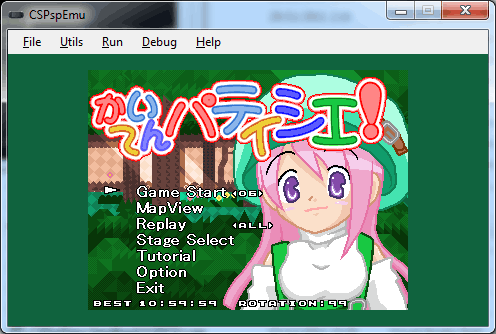

The project began in 1978 as an effort to create a more modern version of the then-conventional design epitomized by the Apple II. Decades later, Jobs would tell his biographer Walter Isaacson: "Obviously it was named for my daughter." Research and design
Mac lisa emulator software#
Privately, Hertzfeld and the other software developers used "Lisa: Invented Stupid Acronym", a recursive backronym, while computer industry pundits coined the term "Let's Invent Some Acronym" to fit the Lisa's name. Andy Hertzfeld states the acronym was reverse engineered from the name "Lisa" in late 1982 by the Apple marketing team, after they had hired a marketing consultancy firm to come up with names to replace "Lisa" and "Macintosh" (at the time considered by Jef Raskin to be merely internal project codenames) and then rejected all of the suggestions. Because Steve Jobs' first daughter was named Lisa Nicole Brennan (born in 1978), it was normally inferred that the name also had a personal association, and perhaps that the acronym was a backronym invented later to fit the name. Though the documentation shipped with the original Lisa only refers to it as "The Lisa", Apple officially stated that the name was an acronym for " Locally Integrated Software Architecture" or "LISA". The final model, the Lisa 2/10, was rebranded as the Macintosh XL to become the high-end model within the Macintosh series.

Newer Lisa models were eventually introduced to address its shortcomings but even after lowering the list price considerably, the platform failed to achieve favorable sales numbers compared to the much less expensive Mac. Jobs then began assimilating increasing numbers of Lisa staff as he had done with the Apple II division after assuming control over Raskin’s project. When Macintosh launched in January 1984, it quickly surpassed Lisa’s sluggish sales. Jobs immediately redefined Macintosh as a less expensive and more focused version of the graphical Lisa. In 1982, after Steve Jobs was forced out of the Lisa project by Apple’s Board of Directors, he then appropriated the Macintosh project from Jef Raskin who had originally conceived of an under $1,000 text-based appliance computer in 1979.
Mac lisa emulator Pc#
Compounding matters, the runaway success of the IBM PC and Apple's decision to compete with itself, mainly via the lower cost Macintosh, were further impediments to platform acceptance. The workstation-tier price (albeit at the low end of the spectrum at the time) and lack of a technical software application library made it a difficult sell for much of the technical workstation market. As a result of cost-cutting measures designed to bring the system more into the consumer bracket, advanced software, and factors such as the delayed availability of the 68000 and its impact on the design process, Lisa’s user experience feels sluggish overall. The complexity of the Lisa operating system and its associated programs (most notably its office suite), as well as the ad hoc protected memory implementation (due to the lack of a Motorola MMU), placed a high demand on the CPU and, to some extent, the storage system as well. The hardware overall was more advanced than the original Macintosh 128k, with hard disk drive support, capacity for up to 2 megabytes (MB) of random-access memory (RAM), expansion slots, and a larger higher-resolution display. Among those is an operating system with protected memory and a document-oriented workflow. Only 10,000 were sold in two years.Ĭonsidered a commercial failure but with technical acclaim, Lisa introduced a number of advanced features that would later reappear on the Macintosh and eventually IBM PC compatibles. Lisa was affected by the high price, insufficient software, unreliable Apple FileWare floppy disks, and the immediate release of the cheaper and faster Macintosh. Development of the Lisa began in 1978, and it underwent many changes during the development period before shipping at US$9,995 (equivalent to $25,970 in 2020) with a five-megabyte hard drive. It is one of the first personal computers to present a graphical user interface (GUI) in a machine aimed at individual business users. Lisa is a desktop computer developed by Apple, released on January 19, 1983. Lisa, with an Apple ProFile external hard disk atop it, and dual 5.25-inch floppy drives


 0 kommentar(er)
0 kommentar(er)
